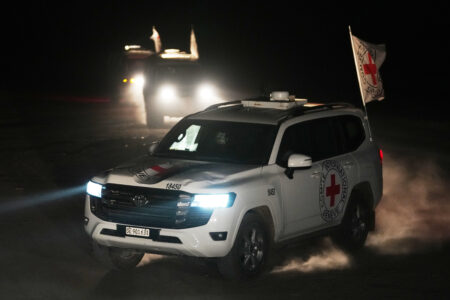CCMC recognizes retiring nurses
PARKERSBURG – Friday was National Nurses Day and it was a fitting day to end four careers of women who served a total of 182 years in the nursing career.
Most of the years were with the newborns at Camden Clark Medical Center and the former St. Joseph’s Hospital as Linda George, Sharon Malson, Peggy Hamilton and Debra Kinsolving called it a day.
Camden Clark officials estimated the four had been a part in some way of more than 40,000 births at the hospitals in those 40 plus years on average. According to those figures, the current population of Parkersburg and then some had been under the care of one of those nurses in one of the nurseries.
George had 48 years in the nursing field and spent all of those years at Camden Clark. Malson and Hamilton have 47-year careers and Kinsolving has 40 years of service. They were at St. Joseph’s before transferring to Camden Clark when the hospitals merged.
Before Friday’s luncheon honoring them at Camden Clark, the four agreed the biggest change in the newborn nursery could be found in the field of technology and how it weaves its way through all aspects of the department.
“The length of time for a stay of a normal delivery was three to four days,” said Malson, “while it was seven days for a C-section. Now both are headed home after 48 hours.”
The thought of an epidural back when Kinsolving began was a distant thought. “There was no such thing as an epidural. You just got a light dose of general anesthesia.”
“There were no IV pumps,” added George. “There were no patient controlled pain pumps either,” said Malson.
“There was no ultrasound either,” said Hamilton. “The ultrasound wasn’t used very often unless there were problems with the pregnancy. And it sure wasn’t used to determine what sex the child was. There were no fetal monitors either.”
The four were quite adept at following sentences from one subject to another without missing a beat as they talked about mixing formula, sterilizing instruments and charting, to name but a few things.
“All the charting was done on paper,” said Malson. “The wrist bracelet was made of stamped letters. There weren’t any printers do things like that.”
And then, as if in a quartet, each with a line of a song, it started. “We wore white hats,” said Malson. “And white hose,” said Hamilton. “And white dresses,” said George. “And white shoes,” said Kinsolving as they detailed what made up the traditional nursing uniform when they began their careers.
“When we started there was not the family involvement with the newborns,” said George. “Everyone was classified. Grandparents were not allowed in. Fathers were limited to looking through glass. Mothers only had the babies in the room a couple of hours a day.”
“But while technology has made the job easier in some ways,” Kinsolving said, “in some ways it made it harder because it’s taken away the direct patient care.”
“I liked the team patient care better than a one-person care,” added Hamilton. “It’s a lot less hands on now,” added George as she spoke about computers doing the work.
But all agreed despite machines doing many parts of the nurse’s job, there are still things a computer can’t do. Such as talking to the patient and patient’s family to reassure them all is well, especially as a mother-to-be comes to the hospital or after the baby has been born.
“It’s still part of the job,” said Hamilton, “to be the patient advocate. We see the patient much more than the doctor and we have to be able to tell the doctor what the patient feels in order to alert them to a possible problem.
“Coming in to deliver,” she continued, “it’s a mother’s most important day. We don’t want them to have a bad day when it should be a very happy day. We want them to relax and have a good day.”






